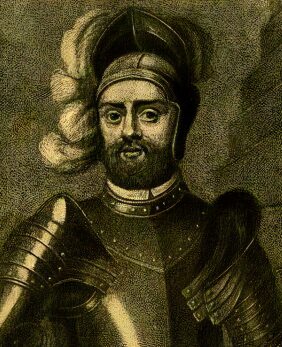Circa 1210 - 1290
Dervorguilla of Galloway was the daughter and heiress of Alan, Lord of Galloway, the last of the MacFergus dynasty and his second wife Margaret of Huntingdon, who was the eldest daughter of David of Scotland, 8th Earl of Huntingdon and Matilda of Chester. David of Huntingdon was himself the grandson of King David I of Scotland.
Devorguilla of Galloway
Devorguilla is a Latin version of the Celtic name Dearbhfhorghaill. In 1223, at the age of thirteen, Dervorguilla of Galloway married John de Balliol, Alan of Galloway died in 1234, without a legitimate son, leaving his three daughters, Helen, Christina and Devorguilla as co-heiresses of his estates.
Sir John de Balliol was the son of Hugh de Balliol, Lord of Balliol and of Barnard Castle and Gainford (c. 1177-February 2, 1229) and Cecily de Fontaines, daughter of Aleure, lord of Fontaines and Longpré-les-Corps-Saints. He acted as joint protector of the young Alexander III. He served as one of King Henry III of England's leading counsellors between 1258 and 1265. Balliol was captured at the Battle of Lewes in 1264 but later escaped.
In 1263, John Balliol was required to make penance after a land dispute with Walter Kirkham, Bishop of Durham. Part of this took the very expensive form of founding a College for the poor at the University of Oxford, further endowments by Devorguilla after his death, resulted in the establishment of Balliol College.
When John de Balliol died on 25 October 1268 Dervorguilla had his heart embalmed and kept in a casket of ivory bound with silver. The casket travelled with her for the rest of her life.
Sir John de Balliol
Devorguilla died on January 28, 1290, just before the death of Margaret, the Maid of Norway, which saw the extinction of the reigning House of Dunkeld. Devorguilla was buried beside her husband at New Abbey, which was renamed 'Sweetheart Abbey', a name which it retains to this day. Both graves are now lost.
Devorguilla's eldest three sons died childlessly, her fourth surviving son John Balliol asserted a claim to the crown on the death of the young Queen Margaret in 1290. He won in arbitration and was crowned King John of Scotland on St. Andrew's Day, 30th November 1292 at Scone Abbey.
The Ancestry of Devorguilla of Galloway
Devorguilla of Galloway
Father: Alan, Lord of Galloway
Paternal Grandfather: Lochlann, Lord of Galloway
Paternal Great-grandfather: Uhtred of Galloway
Paternal Grandmother: Helen de Morville
Paternal Great-grandfather: Richard de Morville
Mother: Margaret of Huntingdon
Maternal Grandfather: David, Earl of Huntingdon
Maternal Great-grandfather: Henry Earl of Huntingdon
Maternal Great-grandmother: Ada de Warenne
Maternal Grandmother: Matilda de Keviloc
Maternal Great-grandfather: Hugh de Kevelioc, 5th Earl of Chester
Maternal Great-grandmother: Bertrade de Montfort
The Family of Devorguilla of Galloway and Sir John Balliol
Sir Hugh de Balliol - died without issue before April 10, 1271.
Alan de Balliol - died without issue.
Sir Alexander de Balliol - died without issue before November 13, 1278.
King John of Scotland circa 1249 - 25 November 1314
Cecily de Balliol -married John de Burgh, Knt., of Walkern, Hertfordshire.
Ada de Balliol - married in 1266, William de Lindsay, of Lamberton.
Margaret de Balliol - died unmarried
Eleanor de Balliol, who married John II Comyn, Lord of Badenoch.
Maud de Balliol - married Sir Bryan FitzAlan, Lord FitzAlan, of Bedale, Knt., (d. June 1, 1306) who succeeded the Earl of Surrey as Guardian and Keeper of Scotland for Edward I of England.
Edward I PreviousNext William Wallace
